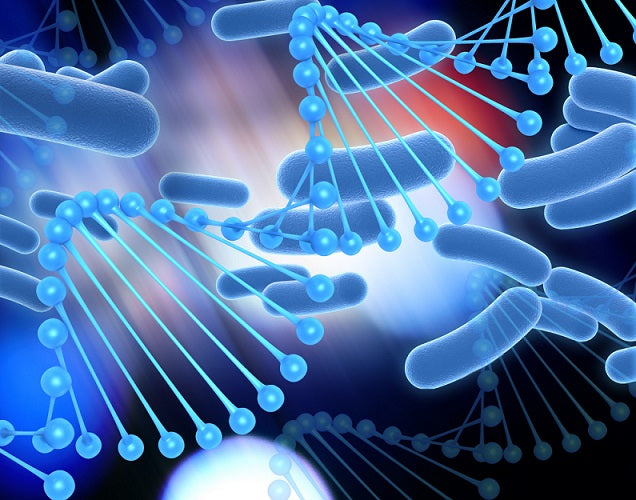
Rethinking the Future with Stem Cells
The realm of regenerative medicine has witnessed a transformative revelation, introducing a novel pathway to augment the success rates and broaden the horizons of stem-cell transplants. This pivotal research, spearheaded by the Albert Einstein College of Medicine, unveils a game-changing strategy that could redefine the treatment landscape for patients battling cancer, blood disorders, and autoimmune conditions.
1. The Essence of Stem-Cell Transplants
Stem-cell transplants have long been a cornerstone in treating conditions where the body's blood-forming stem cells are compromised, such as leukemia, myelodysplastic syndromes, and autoimmune disorders. This therapy involves infusing healthy stem cells from donors into patients, aiming to restore the body's ability to produce vital blood cells.
2. The Revolutionary Discovery
The research team at Albert Einstein College of Medicine, led by Dr. Ulrich Steidl, Dr. Britta Will, and Dr. Xin Gao, uncovered a pivotal mechanism that could significantly enhance the mobilization of hematopoietic stem cells (HSCs) for transplantation. By elucidating the role of trogocytosis in regulating HSC behavior, the study presents a paradigm shift in understanding and optimizing stem-cell mobilization.
3. Implications for Cancer Patients
For individuals grappling with cancer, this newfound approach offers a beacon of hope. By harnessing the potential of trogocytosis and targeting the c-Kit protein, researchers aim to improve the efficiency of HSC mobilization, paving the way for more effective stem-cell transplants. This advancement holds the promise of enhancing treatment outcomes and expanding the accessibility of stem-cell therapy for cancer patients.
Safety, Prevention, Treatment, and Alternatives
In the realm of stem-cell transplants, safety and efficacy are paramount considerations. The potential new approach highlighted in this research underscores a meticulous focus on enhancing the therapeutic benefits while mitigating risks. As with any medical intervention, close monitoring and adherence to established protocols are essential to ensuring patient safety and optimizing treatment outcomes.
Conclusion
In conclusion, the dawn of this new era in stem-cell transplants heralds a transformative shift in healthcare paradigms. With a deep-rooted commitment to advancing patient care and harnessing the regenerative potential of stem cells, this research opens doors to a future where precision medicine and personalized therapies converge. As we navigate this realm of groundbreaking discoveries, the promise of enhanced treatment efficacy and expanded therapeutic avenues shines brightly on the horizon, offering renewed hope to patients and clinicians alike.
By emphasizing the critical need and tangible benefits of this pioneering approach, we pave the way for a future where stem-cell transplants stand at the forefront of cutting-edge medical interventions, ushering in a new era of healing and regeneration.
Sources:
1. Regenerative Medicine and Stem Cell Therapy: An Evolving Paradigm in Modern Healthcare
2. Paradigm shifts in stem-cell biology
3. Stem cells: A new paradigm
1. The Essence of Stem-Cell Transplants
Stem-cell transplants have long been a cornerstone in treating conditions where the body's blood-forming stem cells are compromised, such as leukemia, myelodysplastic syndromes, and autoimmune disorders. This therapy involves infusing healthy stem cells from donors into patients, aiming to restore the body's ability to produce vital blood cells.
2. The Revolutionary Discovery
The research team at Albert Einstein College of Medicine, led by Dr. Ulrich Steidl, Dr. Britta Will, and Dr. Xin Gao, uncovered a pivotal mechanism that could significantly enhance the mobilization of hematopoietic stem cells (HSCs) for transplantation. By elucidating the role of trogocytosis in regulating HSC behavior, the study presents a paradigm shift in understanding and optimizing stem-cell mobilization.
3. Implications for Cancer Patients
For individuals grappling with cancer, this newfound approach offers a beacon of hope. By harnessing the potential of trogocytosis and targeting the c-Kit protein, researchers aim to improve the efficiency of HSC mobilization, paving the way for more effective stem-cell transplants. This advancement holds the promise of enhancing treatment outcomes and expanding the accessibility of stem-cell therapy for cancer patients.
Safety, Prevention, Treatment, and Alternatives
In the realm of stem-cell transplants, safety and efficacy are paramount considerations. The potential new approach highlighted in this research underscores a meticulous focus on enhancing the therapeutic benefits while mitigating risks. As with any medical intervention, close monitoring and adherence to established protocols are essential to ensuring patient safety and optimizing treatment outcomes.
Conclusion
In conclusion, the dawn of this new era in stem-cell transplants heralds a transformative shift in healthcare paradigms. With a deep-rooted commitment to advancing patient care and harnessing the regenerative potential of stem cells, this research opens doors to a future where precision medicine and personalized therapies converge. As we navigate this realm of groundbreaking discoveries, the promise of enhanced treatment efficacy and expanded therapeutic avenues shines brightly on the horizon, offering renewed hope to patients and clinicians alike.
By emphasizing the critical need and tangible benefits of this pioneering approach, we pave the way for a future where stem-cell transplants stand at the forefront of cutting-edge medical interventions, ushering in a new era of healing and regeneration.
Sources:
1. Regenerative Medicine and Stem Cell Therapy: An Evolving Paradigm in Modern Healthcare
2. Paradigm shifts in stem-cell biology
3. Stem cells: A new paradigm